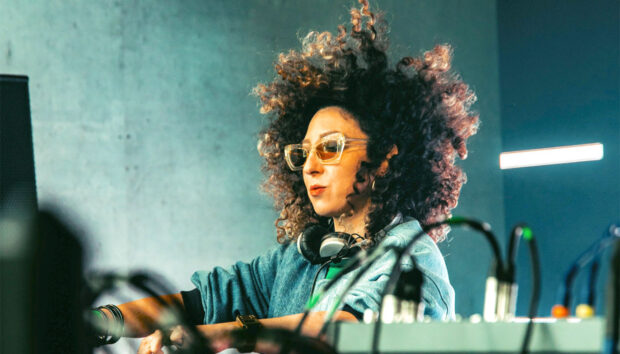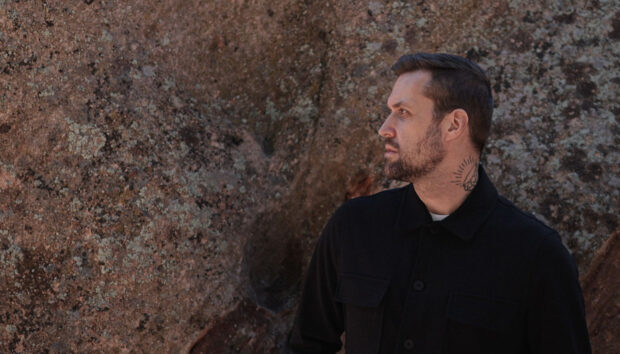
Looping in music refers to the repetition of a musical phrase or section, creating a continued musical texture. This technique is widely used in various genres of music, from electronic dance music to live looping in solo performances. It can be achieved through a loop station, a digital audio workstation (DAW), or even through analog equipment.
In this blog, we’ll learn about the best tools for looping music, how to make loops, and improving your loops with overdubs. Let’s dig into it.
Jump to these sections:
Follow along with this tutorial using KOMPLETE KONTROL software.
What is looping in music?
Looping in music refers to the repetition of a musical phrase or section, creating a continuous musical texture. The idea behind looping is to build up multiple layers of sound, allowing the musician to create complex arrangements in real-time.
Think about it: nearly all music is based on repetition of some kind. Pitches and rhythm make up the DNA of music. Since rhythm is literally repeated divisions of time, and pitch is most often set by 12 tones, there will always be repetition in music, but looping is something more.
When we talk about loops in music, we’re normally talking about recorded audio that repeats. And very often, a loop is something that is recorded in real time, where the beginning and end points are set live. This is because the term loop originates from the first experiments with recorded tape, and accessing the repetitive possibilities allowed when a piece of recorded audio tape was spliced so that the beginning and end would meet, and cycle endlessly through this “loop.”
Loop vs. sample
If you’re new to music production, you might be wondering what the difference is between loops and samples. A loop is a continuous musical phrase or section that is repeated, while a sample is a portion of a pre-existing sound recording that is incorporated into a new composition or production. You may hear “loops and samples” being referred to in the same production, and you may even have samples repeated or “looped” in your song.
How to make loops
Most loops in contemporary music last roughly 4 to 8 bars long. That gives enough time for a musical or rhythmic phrase to resolve and set up to repeat. To make our own loops, we just need to record an idea that is set to repeat every 4 or 8 bars.
Sometimes, when recording a new loop, it helps to start with a loop that already gives us a good foundation. In this example, I want to make a classic Detroit-style electro track, inspired by Juan Atkins, Aux 88, and Drexciya. Luckily, the MOTHER BOARD Expansion pack has a ton of great material to start with. I’ll open KOMPLETE KONTROL, grab this loop for the drums, and I can simply drag it into my DAW.

What’s often essential in making loops work for production is the little variations. Luckily this drum loop has two versions, so I’ll want to grab those to make sure I can make changes.
Now I’ll grab another loop for the bass, to give me a good foundation. I found this bass loop, and I think it will go well. I’m not worried that the BPM is different from the drums, because the DAW will tempo shift it to sync up. I do want to note the key signature is D# because that will guide our other choices later.

Here’s how our two loops sound together.
Customization and variation of loops
This sounds good, but since I have two loops of the drums with variations, I want to change the bass as well. I can simply duplicate the loop and make some minor changes to distinguish it from the original.
Here are some transposition and note chops that I’ve made. And how it sounds with the minor changes.


Now we want to record more loops, let’s get some softer textures. We’ll grab another sample from MotherBoard, and we’ll make sure that the key signature matches our bass line. This Leviathan D#2 sounds good, and will stack nicely into a chord. Let’s load it into KOMPLETE KONTROL.

Now we’ll get into recording new loops.
Recording loops
Let’s take this sample, and just play it in a simple D# minor chord. First, we want to set the loop length in our DAW. We’ll make it the same length as our drum loop—8 bars.

Now we’ll want to start recording, and play our chord.

Improving loops with overdubs
This is good, it gives us a nice balance to the bass line. But it feels like it could be more interesting, so let’s overdub some more action in here. We’ll add a few more chords, staying in D# minor.

This is good, but the timing is off. I think I can do a better version, so I’ll try it again. Once I get closer to the timing I like, quantization will help tighten things up.

I like the chords now, but I want to add some variation. So I’ll duplicate the first bar, and change some of the MIDI notes in the second half. It feels a little less energetic than I want, so I’m going to send it through an Arpeggiator and record that MIDI.

Here’s how the MIDI notes look now.

I’d like to try a different sound, so I found another great one-shot sound in the MotherBoard pack. I’ll add a little bit of delay from REPLICA XT, and here’s how it sounds now.
Putting the loops together
Now that we’ve got some good parts working together, it’s important to balance them, and make sure they work together. I’m going to drop SUPERCHARGER XT on the master bus to get a nice glue effect to bring it all together.

Here’s how our loop sounds with a few bars of variation and some nice effects. It’s got a rough and ready grit, with some retro-futuristic sci-fi funk.
With the same techniques we used to get these loops together, we can make enough variation to finish out a whole track from this. Can you see what else you would do to make this a complete track?
Start using loops in music
Now that you know what loops are in music, you can start using them to create your unique sound. Explore the loops and one-shots available KOMPLETE Expansions to start making your sonic ideas come to life. You can also record your own loops using MIDI instruments like the KOMPLETE KONTROL M32 and the MASCHINE production system.
For more tutorials on making music, check out our music production guide and our electronic music guide.















